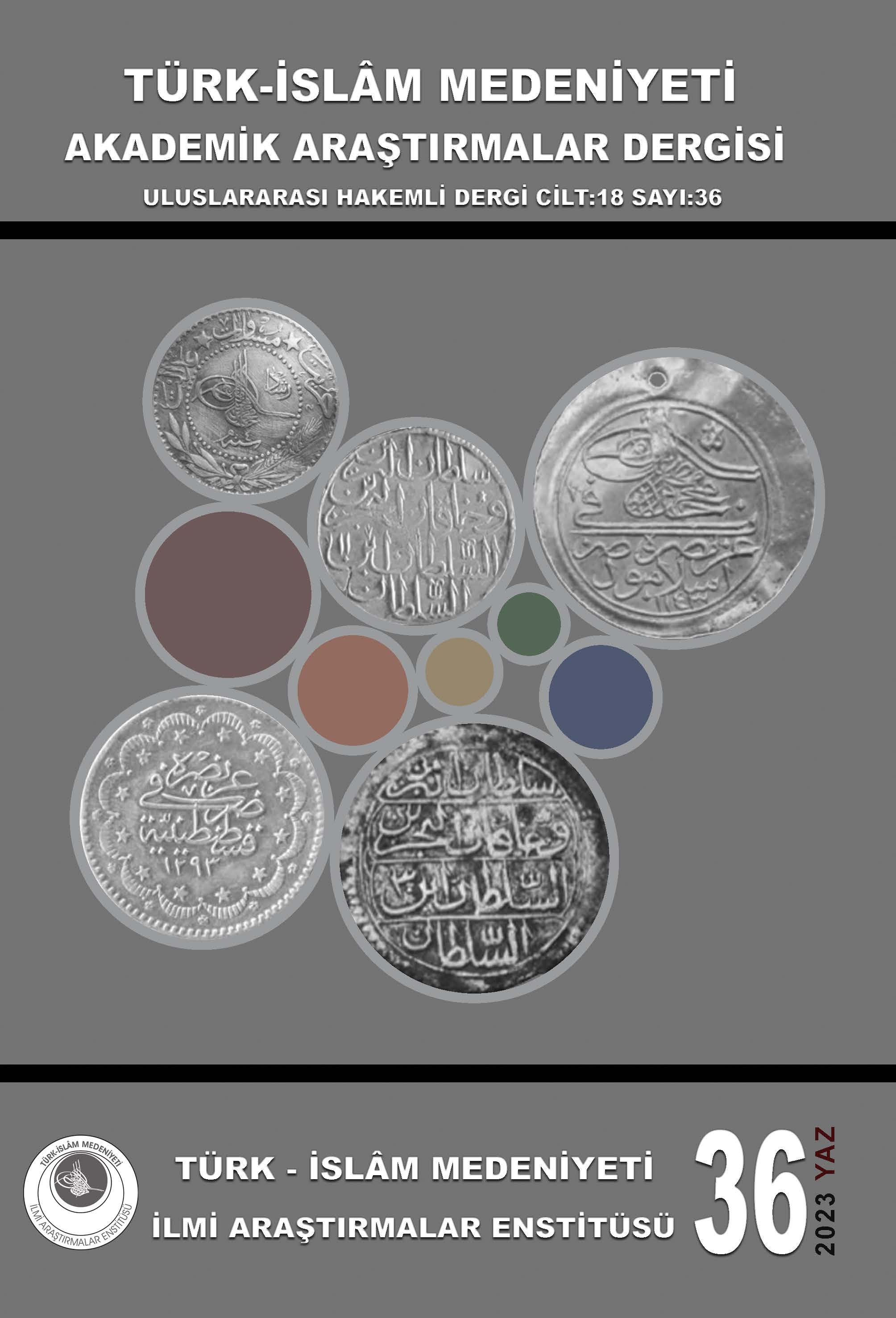A Monograph of the Akin Village, the Province of Aksaray
DOI:
https://doi.org/10.5281/zenodo.7655014Keywords:
Akin Village, Carved Rock Structure, Intangible Cultural Heritage, Tangible Cultural HeritageAbstract
The purpose of this study is to reveal the tangible and intangible cultural heritage of the Akin Village in the province of Aksaray, Turkey. The Akin Village has not previously attracted the attention of researchers. Another reason for conducting this study is that carved rock structures have rapidly started to be lost. This study is designed in the form of a village monograph. The intangible cultural heritage of the village is examined based on beliefs, traditions, folklore, on-site in-depth observations, and interviews with the villagers. Its tangible cultural heritage is investigated by surveying architectural works, preparing drawings for publication, and photography. The examination of architectural works is carried out by including one mosque, one fountain, and three carved rock structures. The concept of living in caves, which are perhaps the oldest forms of rural architecture, in the Paleolithic Period is well-known, while it is stated that this form of living continued also in the Neolithic Period in the Cappadocia region. With the migration movements starting in the 16th century toward the Akin Village and its vicinity, the style of living in carved rock structures and underground cities whose examples were observed in Cappadocia by people started to be implemented in caves. This migration movement continued in the region, and people lived in twenty caves located in the Old Akin Village. Today’s elderly, who were born in these caves, report that people used to inhabit these structures until the 1960s. Life in the village which was moved to its current location started with the distribution of private-registered land to the people in 1966 by state support. The Old Akin Village Mosque survives today as a representation of the deep-rooted wooden post mosque-building tradition of Anatolia. Similarly, the freshwater fountain sustains the most beautiful form of traditional aqua architecture in the region with its sharp, arched style, reservoir, and sink. We owe it to future generations to preserve and maintain the tangible and intangible elements that are the living embodiments of our cultural heritage. Works of architecture and carved rock structures in and around the Old Akin Village that await urgent intervention should be taken under protection as soon as possible.
References
Akok, M. (1946). Kastamonu’nun Kasaba Köyünde Candarlıoğlu Mahmud Bey Camii, Belleten, C.X, 38, Ankara, Nisan, 293-302.
Akyürek, E. (1998). MS IV-XI. Yüzyıllar Kapadokya’daki Bizans, Oyma Yapılar, Oymacı Mimarlar, Issız Vadilerin Adsız Ressamları (Edit. M. Sözen), Kapadokya, İstanbul: Ayhan Şahenk Vakfı Yayınları, 238-395.
Arık, R. (1973). Batılılaşma Dönemi Türk Mimarisi Örneklerinden Anadolu’da Üç Ahşap Camii, Ankara.
Aslanapa, O. (1959). Turkish Art and Architecture, London,1971.
Aydın, R. (2020). Ürgüp Çeşmeleri, Kayseri.
Aygör, E. (2020). Aksaray Demirci Tarihi Yapıları, Konya.
Bıxıo, R. (1993). Surveys in The Underground Cities of Cappadocia, XI. Araştırma Sonucu Toplantıları, Ankara, s.43–56.
Çal, H., (2000), Niğde Şehrinde Ahşap Tavanlı Camiler ve Mescitler, Ankara.
Deniz, B., (1989), Aksaray’da (Niğde) Ahşap Sütunlu İki Köy Camii, E.Ü. Arkeoloji-Sanat Tarihi Dergisi, İzmir, 19-56.
Denktaş, M., (2000), Karaman Çeşmeleri, Kayseri.
Denktaş, M., (2004), Pınarbaşı- Uzunyayla’daki Ahşap Direkli Camiler, Sosyal Bilimler Enstitüsü Dergisi, 2004/1, 16, 53-89, Kayseri.
Dorn, Otto, K., (1959), Seldhukısche Holzaulen Moscheen in Kleinasien, Aus der Wel der Islamıschen Kunts, 59-88.
Dorn, Otto, K., (1967), Die Ulu Dschami in Sivrihisar, Anadolu (Anatolia), IX, Ankara, 161-168.
Erdemir, Y., (1987), Tokat Yöresindeki Ahşap Camilerin Kültürümüzdeki Yeri, Türk Tarihinde ve Kültüründe Tokat Sempozyumu, Ankara, 300-302.
Erdemir, Y., (1999), Beyşehir Eşrefoğlu Süleyman Bey Cami ve Külliyesi, Konya.
Erdemir, Y., (2002), Nakışlı Ahşap Camilerimizin Klâsik Dönemdeki Zengin Bir Temsilcisi: Doğanhisar Ulu Camii, VI. Ortaçağ ve Türk Dönemi Kazı Sonuçları ve Sanat Tarihi Sempozyumu (8-10 Nisan 2002), (Editörler: M. Denktaş & Y. Özbek & A. Sağıroğlu), Kayseri, 381-396.
Eyice, S., (1971), Karadağ Binbir Kilise ve Karaman Çevresinde Arkeolojik İncelemeler, İstanbul.
Gülçur, S., (2004), Güvercinkayası, Arkeoatlas, 4, 144-145.
Huart, C., (1997). Aksaray, İA, I, 274.
Kara, U., M., (2015), Kappadokia Bölgesi Mezar Stelleri, İ.Ü. Sosyal Bilimler Ensititüsü, Doktora Tezi, İstanbul.
Karpuz, H., (2009), Türk Kültür Varlıkları Envanteri Konya, Cilt: I-II-III, Ankara.
Komisyon, (1989), Kapadokya Yeraltı Şehirleri, Ankara.
Konyalı, İ., H., (1974), Abideleri ve Kitabeleri İle Niğde Aksaray Tarihi, Cilt: I-II-III, İstanbul.
Kuran, A., (1972), Anadolu’da Ahşap Sütunlu Selçuklu Mimarisi, Malazgirt Armağanı, Ankara, 179-186.
Özbasaran, M., G. Duru, N. Kayacan, B. Erdoğu, H. Buıitenhuis, (2007), Musular, Türkiye’de Neolitik Dönem, Anadolu’da Uygarlığın Doğusu ve Avrupa’ya Yayılımı. Yeni Kazılar, Yeni Bulgular, Vol. 1, İstanbul, 273-283.
Parlak, Ö., Dişli, G., (2020). Aksaray Tarihi Kent Merkezinin Unesco Dünya Mirası Geçici Listesine Adaylığı İçin Bir Deneme, TÜBA-KED, 22/2020, 141-164.
Şahin, İ., (1989). Aksaray, DİA, II, 291-292.
T.C. Başbakanlık Devlet Arşivleri Genel Müdürlüğü (1996), 387 Numaralı, Muhasebe-i Vilayet-i Karaman ve Rum Defteri (937/1530), Defter-i Hakani Dizisi III., Osmanlı Arşivi Daire Başkanlığı Yayını No:32, Ankara.
Ufuk, E., (1996), On bin Yıl Öncesinde Aşıklı: İç Anadolu’da Bir Yerleşim Modeli, Tarihten Günümüze Anadolu’da Konut ve Yerleşme. Habitat II., İstanbul, 31 - 42.
Web-1 https://aksaray.ktb.gov.tr/TR-63622/cografya.html (Erişim Tarihi: Eylül 2022)
Web-2 https://www.cografya.gen.tr/tr/aksaray/tarihce.html (Erişim Tarihi: Eylül 2022)
Web -3 https://www.endeksa.com/tr/analiz/aksaray/merkez/akinkoyu/demografi (Erişim Tarihi: Eylül 2022)
Yörük D., (2019), XVI. Yüzyılda Aksaray Sancağı, Aksaray.
Yörükoğlu, Ö., (1991), Kayseri Çeşmeleri, Kayseri.
Downloads
Published
How to Cite
Issue
Section
License
Copyright (c) 2023 Türk İslâm Medeniyeti Akademik Araştırmalar Dergisi

This work is licensed under a Creative Commons Attribution-NonCommercial 4.0 International License.







